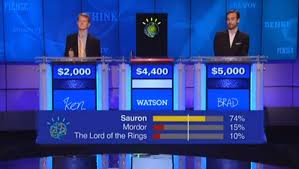I expect a lot of clicks from China on this, they always do when I write about either them or technology.
I found this out playing Duo Lingo, where you learn a new language. They use marketing tools to keep you interested and try for more points such as doubling your score if you finished a lesson before 12.
The AI program does one of two things. Foremost, it gets you involved and competing at a higher level trying harder and spending more time on the app. For learning it is a good thing. For an App company selling advertising, the more time on their site, the more ads they sell.
The second thing it does is discard those who give up killing themselves when they are put into groups with more aggressive players. The lower performing scorers are segregated into a less-competitive group. This group isn’t worth trying to squeeze more money or time out of because they are casual App users.
One of the marketing techniques is a tournament where only a few advance, the aggressive players whom the AI has developed. I’ve ignored it twice because it becomes a 3 week time suck. For me, spending time only on one thing burns me out and I lose interest. I only want to play on my terms, something they didn’t calculate.
THE KOBAYASHI MARU

I love to win and do a lot, like last week. I wanted to beat not only the other players in my division, but the AI behind the game. This is the fault of much of AI. It has to assume human behavior, but goes on perceived behavior. Humans can be random thinkers or those outside of the AI logic.

Any reader of my blog knows I look for patterns to make my life easier and better. Sometimes it is is just for the satisfaction of figuring it out. It was like learning the jab was poison and avoiding it while the sheep lined up to get their daily ration.

It’s almost like living in the Matrix and avoiding the Mr. Smiths of the world.

I was at IBM during Watson and knew the tech companies were seeing this as a potential holy grail. I couldn’t out develop the great minds that write AI, but beating them at their game was equally gratifying. I observed what they were doing and always considered the weaknesses.

Why did I want to do this? I know the Snidely Whiplashes of the world want to take over and control others, like Big Tech and the WEF. Knowing that they are beatable at their own game is valuable. It is like taking the red pill and being in the matrix.

MY STRATEGY
I found that in between the two groups above is where the programmers weakness lies. Those that don’t seem to try or or try outside of the AI rules. It’s AI learns at a machine rate, but not at a human rate.
It’s like when Watson learned to hunt for Double Jeopardy clues and was faster to the buzzer than humans, but AI can be out thought or out maneuvered.
I decided to hold back my scoring for a few weeks to fool the AI into putting me into a lower scoring crowd. I’ve done many thousands of points and finished in the top group without winning, only to be promoted to a higher scoring group. I wanted to see if I tried to score less, would the AI would “learn” that I’m a low scorer.
As I suspected, the groups I got put in were less and less aggressive. The point totals to keep advancing were less and less.
I knew I was gaining ground on the AI weakness and could be manipulated.
Last week, I kept to my minimal effort while learning (both foreign languages and the AI engine behind the App). I noticed that I have been put in lower performing groups. I did my daily amount I’d allowed myself to have and was slowly advancing up the ladder. I was using the AI engine to put me where I wanted to be, not in it’s calculations.
By Friday, I was in the lead with far less points than I’ve done many times in only a day (it starts on Sunday). I had to rely on human behavior that my group weren’t aggressive players, but that was my AI bet that we would be with each other. I was right. I predicted the AI pattern and beat it.
Beating the AI was far more of a challenge than beating the other players.

CONTINUING TO BEAT MACHINES
I knew I’d won by Saturday and did the minimal on Sunday to score. Why? To keep fooling the AI into believing I am a low scoring player. My goal was to win at the lowest level to keep getting promoted into groups that I could predict, and to keep proving that AI is beatable and malleable.
I’ll find out this week if that is fully true as I’m in a tournament for winners now (another marketing ploy) and I will try to finish last and keep advancing. I normally like to crush the competition, but winning by thinking is far more satisfying than winning by brute force. It’s as if you are running the game and the other players.
THE TURING TEST
Of course this is famous, can a machine behave like a human (roughly translated by me). Of course Duo Lingo isn’t as complex as war or landing on Mars, but there are hundreds of millions of humans. That is what they want AI to control, humans (like their free speech on social media).
I wanted to beat a machine, AI and find the holes that are in AI. It is programmed by humans still and can always be beat. They are not sentient. Find the pattern.
OTHER AI CHALLENGES
I play Wordle like a lot of others. I’m not busy trying to win right now, I’m trying to trick their AI into a pattern that I can out think their word selection.




